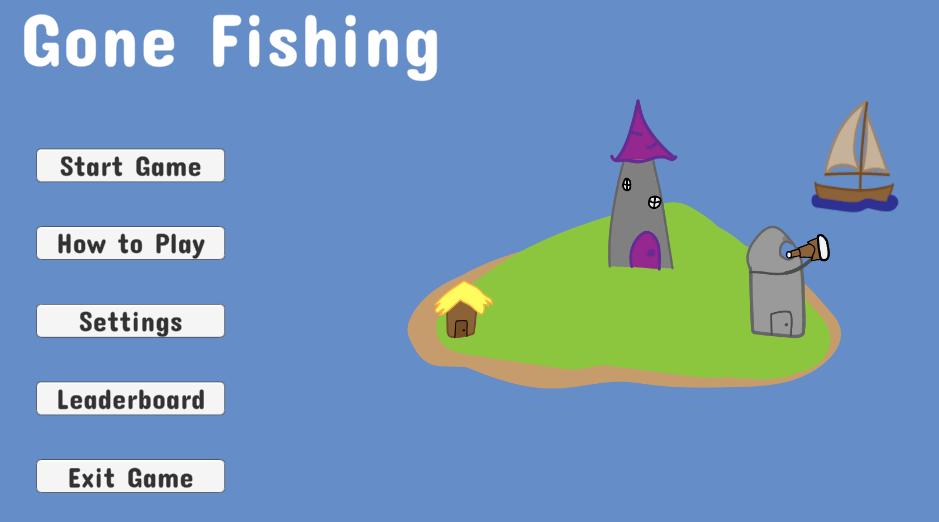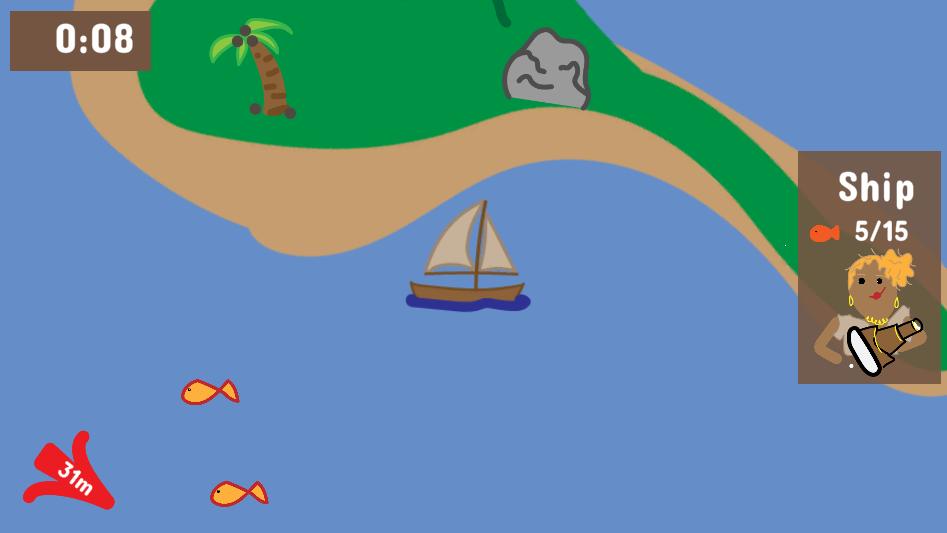Gone Fishing - Unity
Project Summary
Led a team of three for a 30 hour game jam. Won first place! Theme: "Exploring in Unity". Game is built in Unity.
The other 2 team members were UBC engineers with no previous game dev experience. Part of the project involved introducing them to Unity and game development.
- Role: Team lead, programmer
- Skills: Unity, C#, GitHub, project management


Team Leadership
Katarina (on the left) and Evan (on the right) are engineers with extensive programming experience, but no game development background. I did the majority of in-editor work and programming, and Katarina and Evan focussed on designing the menus, creating the art+sound assets, and playtesting.
As team leader, I distributed tasks, set short deadlines, and kept the project was on track. With only 30 hours to complete the game, time management was an important part of the project. I also introduced Katarina and Evan to Unity and game development, and helped them learn the basics of the engine.
Noah (second from the right) was the industry representative for the game jam. He is a professional game developer, and provided me with valuable feedback and advice throughout the project.

Unity Development
I directly developed the following systems:
- Player movement and controls
- Fish spawning
- Shipwrecked survivors
- Fish and survivor collection
- Survivor rescue bonuses
I also designed the game level, laying out obstacles, different fish spawners, and the shipwrecked survivors. Finally, I added some visual progression elements to track player progess, like buildings appearing on the island as time progresses, and custom buildings for the shipwrecked survivors.

Game Design
Our design process was as follows:
- Select a target emotion: frantic excitement
- Select a game archetype to elicit that emotion: push your luck
- Paper brainstorming using that archetype
- Focus on a minimum viable product to verify our ideas
We wanted a game that constantly led players to push their luck, and feel nervous rushing back home to cash in fish before the time runs out. We immediately designed a minimum viable prouduct to verify that this would be fun and engaging, without being stressful or frustrating. The minimum viable product of bringing items back to base against a timer, with each item adding a few seconds, was immediately engaging and proved the validity of our idea. Once we had verified the core gameplay loop, we then moved on with development.
A second key part of the game design process was identifying interesting bonuses to reward to the player when they rescue survivors. I chose these bonuses to reward exploration and add more gameplay depth to the simple gameplay loop.